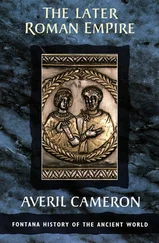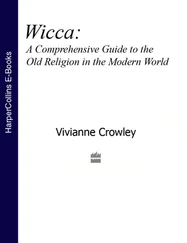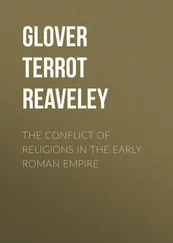However, some sanctuaries in the conquered provinces were completely destroyed by the Roman legions. One such example is the Demeter sanctuary of Corinth, which was put out of service in 146 B.C. under Lucius Mummius in such a way 47that it was only used as a colonia , again as a sacred place, over a century later with the reestablishment of the city. 48Shrines as places of remembrance through which people and communities defined their identity through recurring celebrations, rites and meetings were particularly suited to demonstrate and materialise power relations through the destruction or translocation of honoured objects.
Conversely, temple buildings and sanctuary districts, together with their furnishings and their religiously connoted objects, are the places in the provinces where new political structures were negotiated in interaction with local actors and new social and cultural contexts about the buildings, rituals, festivals, personnel and the deities present. 49The Hekataion in Lagina in Caria in Asia Minor is one such example in which political changes in the 2nd and 1st centuries B.C. are expressed by Roman interests and are thus available as a basis for political discourses and position determination. 50On the frieze of the temple the Olympic gods and goddesses, local Carian deities and heroes, were depicted. In the central scene stands a magistrate holding out his hand to an Amazon-like figure, probably the Dea Roma. The responsible local elites with the pledge of the sanctuary sealed a contract with Rome from the end of the 2nd century B.C., which was renewed again under Sulla in 81 B.C. 51
The expansion of the city of Rome further into the Mediterranean region also brought about the import of new deities into Rome. The best known are Asklepios, Venus Erykina or Magna Mater, which were »fetched« or »called« with great diplomatic effort in moments of political and military crises. 52
In the Roman imperial period, not least through the efforts of Augustus to reestablish religious piety in the Roman world throughout his reign, all these traditions were brought together, not merged or homogenised, but linked by the inclusiveness and elasticity of Roman religion, which proved to be capable of embracing wide-ranging religious traditions, as long as these did not interfere with the basic structure of Roman religious practice, namely offering to the gods through ritual practice. The problems which the Roman administration had with for example the Jews and more specifically their monotheistic religion are well-known, and the Jewish resistence and unwillingness to acknowledge the Roman gods was part of a profoundly complex process that led to the First Jewish Wars, which devastated not only Jerusalem, but also other parts of the region beyond the diaspora. 53The same goes for early Christianity and the massive problems with fitting into the religious system of the Roman Empire. Much could be embraced by Roman religion but insistence on a monotheistic faith was not one of them. 54
2.1 New temples and gods under new rulers
But how does religious diversity and the clash of religious traditions develop in a growing empire that reached its greatest expansion in the 2nd century A.D.? What role do sanctuaries play in transformation processes? This empire did not form a territorial unit and knew no nationalistic aspirations, as we know it from modern times. Rather, it was a structure that was permanently in flux or literally »under construction«, whose partners had to adapt to the manifold conditions and knew how to adapt. Particularly, places where religious practices concentrated (shrines, sanctuaries) are the spots where changes, new strategies of communication, processes of transformation and appropriation could be negotiated. Sacred places are the physical constants in dealing with different gods and rituals and as such played an important role in social and political processes.
The layout, structure and architecture of sanctuaries in the various regions of the Roman Empire differed not only in terms of design and form, but also functionality. Differences lie, for example, in the fact that since the 6th century B.C. people in Etrurian regions built temples on podiums, of which the sanctuary of Portonaccio in Veii is an example. 55Podium temples recur in later Roman temples of the Republican period, but more often in urban or settlement contexts, as it can still be seen in the temple for the Capitoline Triad in Pompeii, or the Quattro Tempietti, and the temple for Hercules in Ostia. 56
With influences from the Greek-Hellenistic East, which were picked up and transported in different ways by local actors such as craftsmen, city officials or merchants, 57the building traditions for sacred buildings on the Italian peninsula changed considerably between the 3rd to the 1st century B.C. Many smaller shrines in Italy experienced an upswing or expansion in the period before the civil wars in the 1st century B.C.—the inner-city temple buildings in Pompeii, but also the small sanctuary for Liber (Dionysos) near S. Abbondio near Pompeii would be examples of this. 58Local differences remain clear, as for example in the areas of former Punic influence (Iberian peninsula, Sicily, Sardinia, North Africa), where holy places were characterised by stelae ( tophet) placed on the ground, a tradition that was taken up differently in the re-construction of sanctuaries after the Roman conquest, 59but similar strands of action and reference systems of the actors are emerging from the 3rd century B.C.: Terraced sanctuaries such as the sanctuary for Jupiter in Antium or for Fortuna in Praeneste show the architectural form of expression at this time. 60They are modified and varied all over the Italian peninsula, for example in Pietrabbondante in the southern Abruzzi, and bear witness to multi-layered relationships between Latin and »indigenous« tribes. 61Temples with peristases, i.e. columns standing around the cella , decrease in number, whereas those with a front portico with columns become more popular, as the temple of Cori in Latium shows. 62The early Italian-Etruscan form of temples on podia come into fashion again. Thus the Temple of Minerva in the old Lucanian-Greek sanctuary in Canosa was erected on a podium in the 2nd century B.C. 63The increasing focus on monumentality also brought a forced focus on the interaction between the altar, which was placed in front of the temple, the temple (house of the god) and the people who came to make sacrifices. This linear, not triangular, relationship—god-sacrifice-people—was one, which became the axis for all religious communication in the Roman imperial period. A straight line of communication was firmly located as central. Do ut des stood at the centre of religous practice and shaped not only the communication with the gods but also the physical (architectural) lines of interaction.
Although, each individual directed the gift or sacrifice towards the deities, she or he and their dedications were also embedded in a social context and served communication with their fellow human beings. 64With endowments of temples ex manubiis in the Late Republican times, which represented treasure houses for looted works of art, commanders could convey a clear and highly visible message. But even on a smaller scale of portable offerings, their visibility, presence or legibility in a sanctuary was part of the act and purpose communicated to visitors coming at the same time and later to the sacred place. In the imperial period, especially in the 2nd century A.D., the number of inscriptions exploded, while at least in Italy the previously prevailing terracotta consecrations declined. 65These shifts show that the people in the different regions of the Empire have repeatedly adapted their ways of communicating with the deities and their fellow human beings. 66The dedications and consecrations of objects, buildings or inscriptions to the gods, whether by individuals or groups, 67are always an expression of competition and contest, i.e. communication not only with the gods, but also with fellow human beings. Hence, sanctuaries were places of a multifarious self-representation. These social processes and functions of sanctuaries can be well traced in the history and life of the various sacred places and shrines at Ostia, the harbour city of Rome. 68The changes in religious practices were at the same time the driving force and the result of the different clear or rapid transformations by the Roman administration between the 1st and 3rd centuries A.D.: Expansions of cities on a large scale in all provinces of the Roman Empire went hand in hand with changes in religious practices, including the establishment of new sanctuaries, but also the changes in existing ones. 69
Читать дальше












